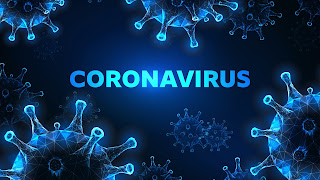Natural Antibiotics for human body.Antibiotic use in livestock
Natural
Antibiotics for human body
The discovery and development of
antibiotics has been a literal lifesaver for both humans and animals. Before
antibiotics, many bacterial infections led to death. What started as a minor
infection burgeoned until the body could no longer survive it? After antibiotics,
millions of lives were saved and surgeries became safer.
Unfortunately, bacteria are
highly adaptable. They are able to evolve to become immune to the medications
we throw at it. This process is called antibiotic resistance, and it is
happening all the time. Our overuse of antibiotics has seriously accelerated
this process.
For this reason, it is often
better to give your body a little bit of time to try and fight the bacteria
without medication. Improve your natural infection-fighting ability by eating
more fruits, vegetables, nuts, and seeds on a regular basis. And when your body
needs a boost to fight off a pesky bug, try the following natural antibiotic
foods. And like my page health blog visit my sites and update human body
Medicare pages.
One of these is actually among
the most famous gifts ever given – can you spot it? But first, find out more
about how the overuse of synthetic antibiotics is pushing the population toward
a global crisis.
Antibiotic use in livestock
is the use of antibiotics for any purpose in the husbandry of livestock, which includes treatment when ill (therapeutic), treatment of a group of animals when at least one is
diagnosed with clinical infection metaphylaxis, and preventative treatment (prophylaxis). Antibiotics are an important tool to treat animal as well
as human disease, safeguard animal health and welfare, and support food safety.
However,
used irresponsibly, this may also have impacts on human, animal and
environmental health in a One
Health context, as up to 90% of the
antibiotic parent compounds can be directly excreted and this can lead to
antibiotic resistance developing in the environment While levels of use vary
dramatically from country to country,
for example
some Northern European countries use very low quantities to treat animals
compared with humans, worldwide an estimated 73% of antimicrobials (mainly antibiotics) are consumed by farm animals. Furthermore, a 2015 study also estimates that global
agricultural antibiotic usage will increase by 67% from 2010 to 2030, mainly
from increases in use in developing BRIC countries. This is a matter of concern as antibiotic resistance is considered to be a serious threat to human and
animal welfare in the future, and growing levels of antibiotics or
antibiotic-resistant bacteria in the environment could increase the numbers of
drug-resistant infections in both.
Infectious
diseases are the third leading cause of death in Europe and a future without
effective antibiotics would fundamentally change the way modern human as well
as veterinary medicine is practiced. However, legislation and other curbs
on antibiotic use in farm animals are now being introduced across the globe. In
2017, the World Health Organization strongly suggested reducing antibiotic use in animals
used in the food industry.
The
use of antibiotics for growth promotion purposes was banned in the European
Union from 2006, and the use of sub-therapeutic doses of medically
important antibiotics in animal
feed and water to promote growth and improve feed efficiency became
illegal in the United States on 1 January 2017, through legislative change
enacted by the Food and Drug Administration (FDA), which sought voluntary
compliance from drug manufacturers to re-label their antibiotics.





Comments
Post a Comment